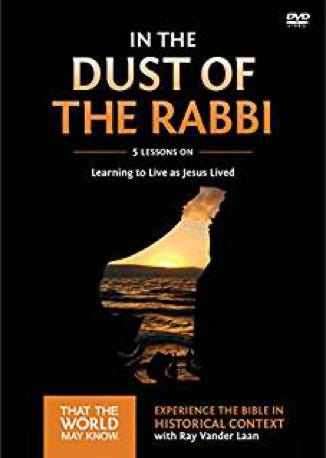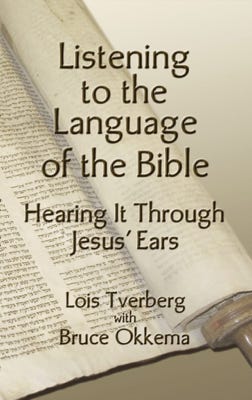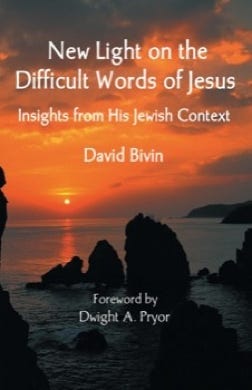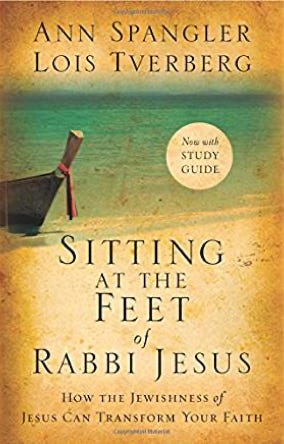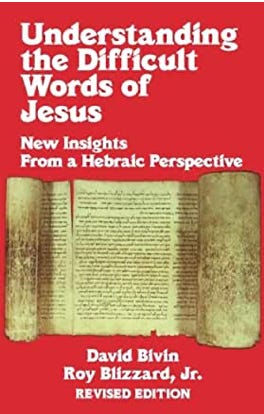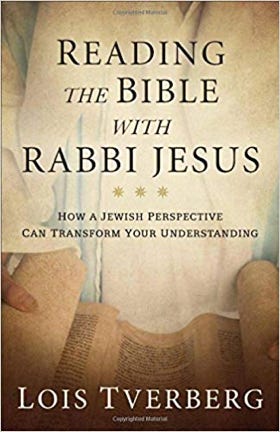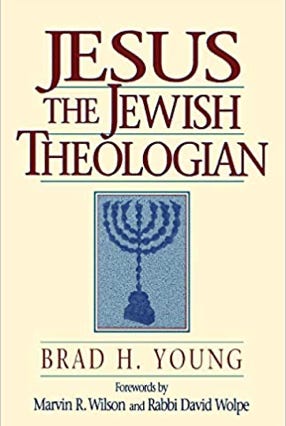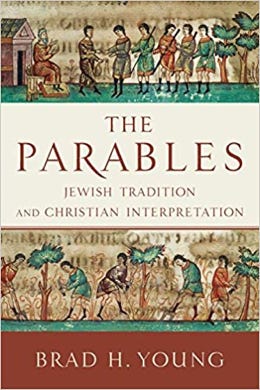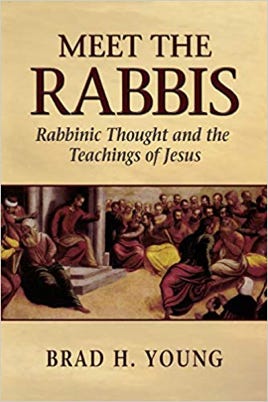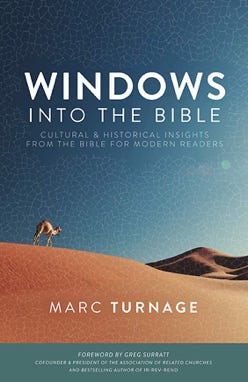
Grafted Branches
Looking at the Historical & Cultural
Context of First-Century Israel

Current scholarly research
A Good Place to Start For those who are new to Jewish Roots study.
That the World May Know (Video Series) Faith Lessons by Ray Vander Laan
Do you ever feel like you are a follower of Jesus , but from a distance? “Follow the Rabbi, drink in his words, and be covered with the dust of his feet,” says the ancient Jewish proverb. In Jesus’ disciples day, disciples followed their Rabbi so closely that they would be covered with the dust kicked up by the Rabbi’s feet. Join renowned tach and historian Ray Vender Laan as he guides you through the land of the Bible. Each lesson illuminates the historical, geographical, and cultural context of the scriptures. Filmed on location in Israel, Greece, Turkey, Egypt, and Rome to highlight Jesus, Paul and the Bible stories in their Eastern Jewish context. There are 16 (to date) individual studies of the land and the culture of the Bible. A must!
Listening to the Language of the Bible By Lois Tverberg & Bruce Okkema
The Bible speaks in words and phrases that come from a very different culture, place and time. Sometimes its Hebraic ideas and imagery sound foreign to our ears, but when enter the minds of its ancient authors, we discover great new depth and meaning. Come with us as we learn from the Bible’s rich phases and imagery, and gain new insight one its words for our lives.
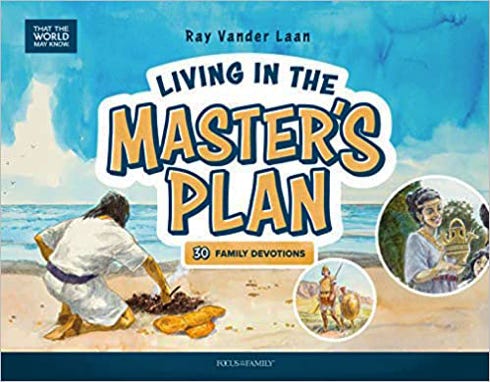
Living in the Master’s Plan by Ray Vander Laan
Biblical historian, teacher, and author in the bestselling video series, “That the World May Know” film series, Ray Vander Laan, is known for insightful and practical teaching exploring God’s word in its historical, geographical, and cultural context by teaching on location at the actual ancient, historical sites where biblical history occurred. This great book has thirty family devotions for families to read and discuss together offering a fresh perspective.
New Light on the Difficult Words of Jesus by David Bivin
What if we could step back into the first-century world of Jesus and walk on a dusty road with him as one of his first Jewish disciples? Here we examine Jesus' lifestyle as a first-century Jewish rabbi and look at how his words would have been understood within the larger framework of first-century Judaism. In this stimulating collection of writings, David Bivin will be your personal tour guide through the multi-hued Jewish landscape that frames the words of our Lord. His words will grow in clarity and depth when seen in the light of their original setting.
Sitting at the Feet of Rabbi Jesus by Ann Spangler & Lois Tverberg
What would it be like to journey back to the first century and sit at the feet of Rabbi Jesus as one of his Jewish disciples? How would your understanding of the gospel have been shaped by the customs, beliefs, and traditions of the Jewish culture in which you lived? Sitting at the Feet of Rabbi Jesus takes you on a fascinating tour of the Jewish world of Jesus, offering inspirational insights that can transform your faith. The authors paint powerful scenes from Jesus’ ministry, immersing you in the prayers, feasts, history, culture, and customs that shaped Jesus and those who followed him. You will hear the parables as they must have sounded to first-century Jews, powerful and surprising. You will join the conversations that were already going on among the rabbis of his day. You will watch with new understanding as the events of his life unfold. And you will emerge with new excitement about the roots of your own Christian faith.
Secrets of the Temple Mount by Leen & Kathleen Ritmeyer
Discover the hidden secrets of Solomon’s Temple, King Herod’s expansion of the Temple Mount, and where the Ark of the Covenant once stood. Learn the amazing infrastructure of the temple and how it was constructed. Illustrated with stunning photos and clear explanatory drawings.
How To Study Your Bible by Kay Arthur, David Arthur, Pete DeLacy
Now you can cultivate the inductive skills of observation, interpretation, and application and become an active participant in God’s Word. In 15 easy-to-understand chapters, the authors present a systematic approach that includes key words, context studies, comparison and contrasts, topical studies, and more. This life-changing way of understanding and exploring Scripture reveals the Bible’s message and helps you live boldly and confidently in God’s truths.
Going Deeper
Walking in the Dust of Rabbi Jesus by Lois Tverberg
Challenging readers to follow their Rabbi Jesus more closely by re-examining his words in the light of their Jewish context. Doing so will provide a richer, deeper understanding of his ministry, compelling us to live differently, to become more Christ-like. In Walking in the Dust of Rabbi Jesus we'll journey back in time to eavesdrop on the conversations that arose among the rabbis of Jesus' day, and consider how hearing Rabbi Jesus with the ears of a first-century disciple can bring new meaning to our faith. And we'll listen to Jewish thinkers through the ages, discovering how ideas that germinated in Jesus' time have borne fruit. Doing so will yield fresh, practical insights for following our Rabbi's teachings from a Jewish point of view.
Understanding the Difficult Words of Jesus
by David Bivin & Roy Blizzard Jr.
This book shares information that is well attested and well known to Israeli scholars that Jesus’ teaching was originally transmitted in its Hebraic background. The authors clearly describe ways of understanding some original Hebrew and Greek techniques discovering the true meanings of many of the words of Jesus. This book will be an important addition to your personal or group Bible study time.
Reading the Bible with Rabbi Jesus by Lois Tverberg
What would it be like for modern readers to sit down beside Jesus as he explained the Bible to them? What life-changing insights might emerge from such a transformative encounter? Lois Tverberg knows the treasures that await readers willing to learn how to read the Bible through Jewish eyes. By helping them understand the Bible as Jesus and his first-century listeners would have, she bridges the gaps of time and culture in order to open the Bible to readers today. Combining careful research with engaging prose, Tverberg leads us on a journey back in time to shed light on how this Middle Eastern people approached life, God, and each other. She explains age-old imagery that we often misinterpret, allowing us to approach God and the stories and teachings of Scripture with new eyes.
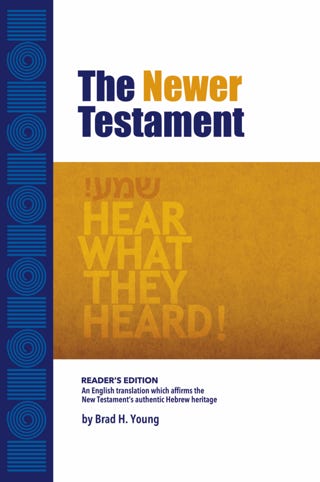
The Hebrew Heritage Bible Newer Testament is an English translation of the New Testament by Brad H. Young, PhD. “Newer” is used to highlight the interconnectedness and coherence of the Old and New Testaments. The Hebrew heritage of the “Older” Bible is the essential platform for New Testament studies. It must guide the cultural, historical, linguistic, and textual foundations of careful translation work. The Newer Testament uncovers the authentic, pure first-century context for personal devotion, comparative translation study, and academic reference.
Going Deeper Yet!
Jesus the Jewish Theologian by Brad Young, PhD
Jesus the Jewish Theologian establishes Jesus firmly within the context of first century Judaism and shows how understanding Jesus' Jewishness is crucial for interpreting the New Testament and for understanding the nature of Christian faith. Insights from Jewish literature, archeology, and tradition help modern readers place Jesus within his original context. Particular attention is given to the Jewish roots of Jesus' teaching concerning the kingdom of God.
The Parables Jewish Tradition & Christian Interpretation by Brad Young, PhD
Fully one-third of Jesus' words in the Synoptic Gospels occur in parables. It could be said that knowing the parables is essential for understanding the person of Christ. In this work, Brad Young displays his unique perspective as a scholar steeped in both Jewish and Christian studies. While parables have timeless messages, reinterpretations in new contexts throughout the centuries have distorted the original meanings and undermined the essence of what Jesus intended for his initial listeners. Young examines the parables that best illustrate the parallels between the rabbinic and Gospel parables. He challenges readers to remember that first-century Judaism was not merely the backdrop for Jesus' teachings but the very stage from which Jesus delivered the message of the kingdom. Jesus' ethics and theology can be properly understood only in the light of first-century Jewish teachings.
Paul the Jewish Theologian by Brad Young, PhD
Paul the Jewish Theologian reveals Saul of Tarsus as a man who, though rejected in the synagogue, never truly left Judaism. Author Young disagrees with long held notions that Hellenism was the context which most influenced Paul's communication of the Gospel. This skewed notion has led to widely divergent interpretations of Paul's writings. Only in rightly aligning Paul as rooted in his Jewishness and training as a Pharisee can he be correctly interpreted. Young asserts that Paul's view of the Torah was always positive, and he separates Jesus' mission among the Jews from Paul's call to the Gentiles.
Meet the Rabbis Rabbinic Thought and the Teachings of Jesus by Brad Young, PhD
In this sense, rabbinic thought is relevant to every aspect of modern life. Rabbinic literature explores the meaning of living life to its fullest, in right relationship with God and humanity. However, many Christians are not aware of rabbinic thought and literature. The author seeks to introduce the reader to the world of Torah learning. It is within this world that the authentic cultural background of Jesus' teachings in ancient Judaism is revealed. Young uses parts of the New Testament, especially the Sermon on the Mount, as a springboard for probing rabbinic method. The book is an introduction to rabbinic thought and literature and has three main sections in its layout: Introduction to Rabbinic Thought, Introduction to Rabbinic Literature, and Meet the Rabbis, a biographical description of influential Rabbis from Talmudic sources.
The Life and Teachings of Hillel By Yitzhak Buxbaum
This book is a comprehensive study of the quotations and comments found in rabbinic literature about Hillel, who is probably the best known of the ancient sages. Also the reader will begin to see the two contrary ideals, represented by Hillel and his contemporary and adversary Shammai.
Windows into the Bible by Marc Turnage
While many endeavor to help people read and study the Bible, few take seriously the four-dimensional approach necessary to understand God’s revelation in time and space.These four aspects must be synthesized to answer the question, “What did the Bible mean?” They function like four lenses of a camera that, when pointed and focused on an object, are adjusted until the picture comes into focus. By looking through the spatial, historical, cultural, and spiritual lenses, people can step back into the world of the Bible, as best as they are able, and hear the message as its authors intended. They find themselves at the feet of Jesus, hearing Him as His original audience did. And once people enter into the world of the Bible, they can reenter their own world and answer the question, “What does this mean today?”
